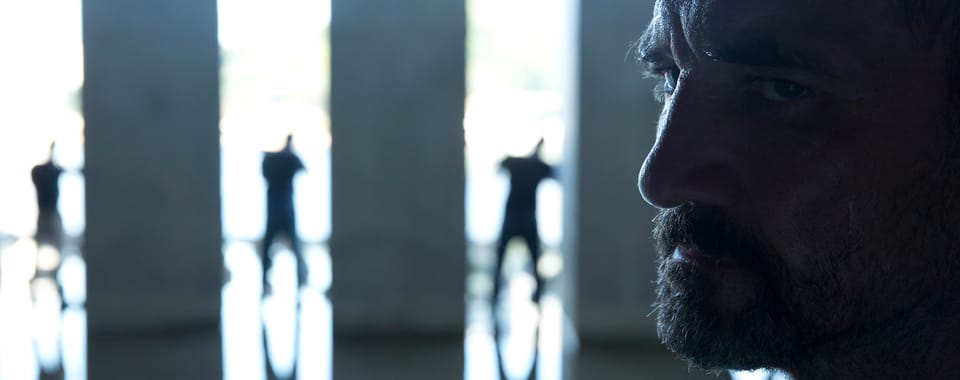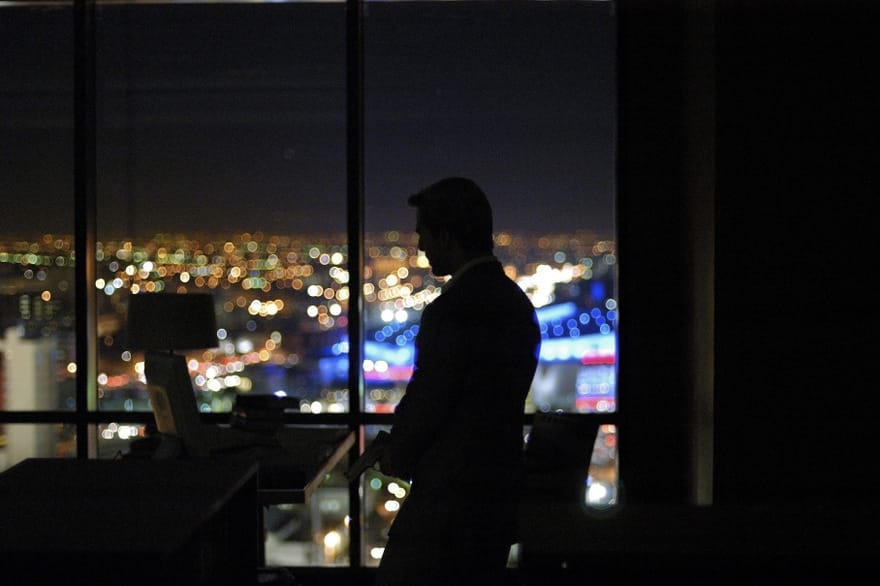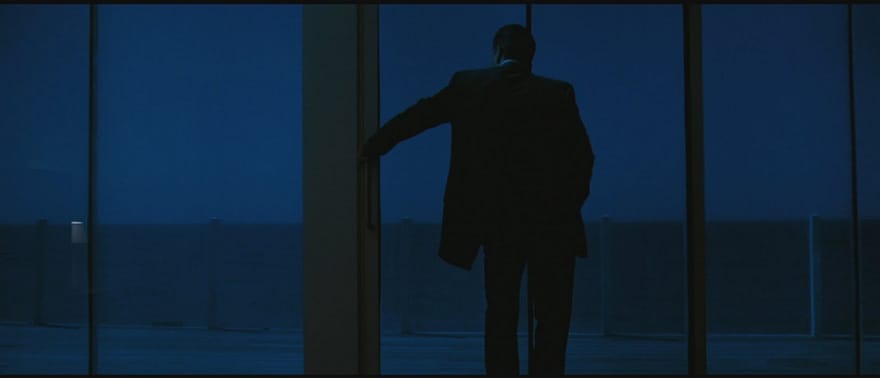Michael Mann: cinema’s glitch auteur

I can not recommend Michael Mann’s Blackhat to you. I can’t recommend it in the same way that I couldn’t recommend, say, a new Bongripper record, or an anime about sentient schoolgirl uniforms. I don’t know you. I don’t know if you’re already as deep into that shit as I am, or if you’re a normal, healthy person.
Blackhat is not a movie for healthy people. It’s a Michael Mann deep cut, a fans-only piece of work that doubles down on its creator’s strange idiosyncrasies. Like with any niche, whether it’s the infinitesimal variations of black metal or the stubborn masochism of survival horror, you’d better get into the style from the ground up, because each new practitioner is in conversation with that style. It’s a cloistered ritual of mannerism and small refinements.
Having said that, Blackhat is not a refined piece of work; certainly not in any conventional sense. Its cinematography is inconsistent, its sound design strange, its acting underplayed, its pace slow, its narrative conflicts dull. I mean, the inciting incident here is soy future manipulation.
It’s also a wholehearted embrace of the crap digital aesthetic that Mann threw himself into fifteen years ago: a peculiar kind of bitcrushed cinema.
He’s one of the only filmmakers treating digital as a unique aesthetic.
Mann’s ugly digital textures—reminiscent of the unnaturally smooth “soap opera effect” naysayers used to complain about when HD television was in its infancy—have a foreign, fresh quality. They don’t look real, but they also don’t have the comforting warmth of film. We’ll never get a digital Suspiria or Blade Runner: those color-soaked, grainy images rely on the inherent qualities of film stock. But Mann’s not interested in nostalgia. He’s one of the only filmmakers treating digital as a unique aesthetic, not a cheaper approximation of an old format.
//
Part of the reason Blackhat is so jarring is that digital doesn’t have to look this shitty. Since Lars von Trier’s legendarily divisive 2000 musical Dancer in the Dark (which, to give you a general idea of its reception, Mike D’Angelo called an “aesthetic disgrace”) and David Lynch’s hideous self-immolation Inland Empire digital has come a long way.
Mann’s gotten it aesthetically “right” before, in 2004, with Collateral. He wanted immediacy, and he wanted to shoot low-light scenes in natural darkness. Immediacy, check: peep the scene where a coyote runs across a highway, caught in hard headlights, a spontaneous bit of reality that would’ve been nigh-impossible to catch on traditional film. Low-light scenes, check: the climax begins in complete darkness, the only light coming from the shimmering cityscape outside. All opportunities for big geometric neon bokeh are thoroughly exhausted by the end of the movie.
In fact, Mann made such good use of digital film’s strengths with Collateral that it was as if he wanted to blow the thing wide open his first time out. He wanted to take digital to his grave. No one would ever touch it again after this; only whisper of it, hushed voices in film studies classes, recounting the legend of Michael Mann.

Yet he kept going. In some ways, you could make the argument that his first film, 1981’s Thief, is this conundrum writ large: everything he would ever put into a film is there, already, rendered with exacting care. Why keep making films?
Blackhat is the thick inky reduction that results from throwing Thief on boil for twenty minutes. It’s intoxicating stuff if you can stand it. Each of Mann’s films since Collateral has narrowed the scope further, entrenching itself in stylistic fetishism and jettisoning everything else. Moving chronologically through Mann’s filmography, the fascination with safecracking or forensics or heists is slowly revealed as a fascination with simply doing: the nature of the task is nearly irrelevant. At this point it’s a game of signifiers, a narrative enacted on a wholly abstract plane.
Having freed himself from the burden of realistic representation on a narrative or visual level, Mann has submerged himself in a grotty, spotty, muddled visual aesthetic that seems deliberately designed to unbalance the viewer.
There are shots in Blackhat that are crisp, standard HD stuff. Then there are shots that show obvious digital banding, are underlit, smeary, noisy. Much of the dialogue is mixed at the “I can hear it, but I don’t understand it” threshold, but fetishistic detail is paid to the auditory characteristics of different guns, and the clatter of spent cartridges on wet concrete, and the heavy thudding of a knife plunging into a man’s chest.
Mann twists traditional cinematic language. He’s using shorthand for the conventional bits—here a character’s tortured backstory is given a startlingly elliptical treatment even by Mann’s standards; the antagonist is just a dick who wants a lot of money—and laying down painstaking cursive when the genre fixtures come in: city-street shootouts, a guy in a room who has to “make the call,” exploding cars, ambushes, bar fights, noir-inflected cityscapes.
Mann has submerged himself in a grotty, spotty, muddled visual aesthetic.
It’s an expressionist line of thought: using aesthetics to reflect or comment on characters’ psychological states. Everything Mann has done since Ali has a sort of mythic, predetermined serenity that allows Mann to suggest emotions merely by shoving a camera in an actor’s face as they, say, stare out at open sky after being released from prison. Because we know what Chris Hemsworth’s beefy, hound-faced hacker would be thinking in that moment, Mann can let up on the gas. He puts a face against a background, and it carries itself.
That shot is everywhere in this film. It was in Collateral, too, notably as a handheld push-in on Tom Cruise’s silver-on-silver hitman as he peered through a subway window. The New York Times’ Manohla Dargis reads these shots as “briefly isolat[ing] these men and women from a world that, like everyone else, they’re desperate to comprehend.” Most of the characters in Blackhat get one.
They aren’t point-of-view shots, not quite, because Mann’s not interested in what they’re seeing, but how they react to seeing it via their body language, their expressions. Like Dargis, critic Peter Labuza ties this implicitly to the film’s technological milieu, saying “the digital world has collapsed time and space … but if you can have a tangible body, then you have something to hold.”
Blackhat isn’t about hacking, really. I could not care less whether or not the hacking is accurate. In case you’ve missed the past year, real-life hacking is pretty fucking dumb. The film is about digital ephemera colliding with the meatspace. It’s our connected world visualized as inside-the-computer CG that initially looks way below Mann’s level but is refracted through everything from the circuit-board sprawl of luminescent street markets to the one-way crush of bodies at an outdoor festival, moving like schools of fish.
Or data packets.
//

“Am I being tangible enough for you?” asks Viola Davis’s wonderfully no-bullshit FBI agent at one point. If we can trust the film to have a mission statement, that’s it. Mann’s traditionally imperfect mise-en-scene becomes increasingly tactile as it falls apart. The crackle of gunfire in a sewer becomes a roaring drone of white noise. The arc of a romance begins and ends with a hand touching a bare arm. If two things touch, no more need be said.
There are two cuts near the end of the film—two cuts—that electrify with their audacity. Davis’s character is on the ground, sputtering after taking several shots to the chest. We want to believe she’s wearing a vest, or got shot in one of those movie-safe places like the shoulder. She’s been comfortingly assured the whole film. She’s the closest thing it has to a personality.
But the first cut comes: a Hong Kong skyscraper, glittering bright against flat navy night. And it’s already fading in her dimming sight.
The second cut: Davis, framed squarely, already dead.
In not ten seconds Mann gives us a stunning bit of visual poetry, an impressionistic reprieve amid the headlong rush of a pitched gunfight. And everything is so present: the awful sheen of Davis’s blood, the creeping darkness at the edges of the frame, the weightlessness of the soundtrack at that moment.
Nothing in the film—in our world—is beyond the reach of ones and zeroes.
This is as personal as Michael Mann gets. We associate tangibility with the chewy grain and rich color of film stock; but here, at every turn, Mann makes the digital real. More than real; hyperreal. Movie Star Hemsworth is lifted Under the Skin-style from the franchise mill and made into a slab of beef, a body coiled with kinetic potential: his violence is, paradoxically, far more destructive than the violence of his superhero alter ego. Everything pulses and seethes with the clarity of a lucid dream. Nothing in the film—in our world—is beyond the reach of ones and zeroes.
It’s to Mann’s credit that he always makes us aware of their imperfections.



